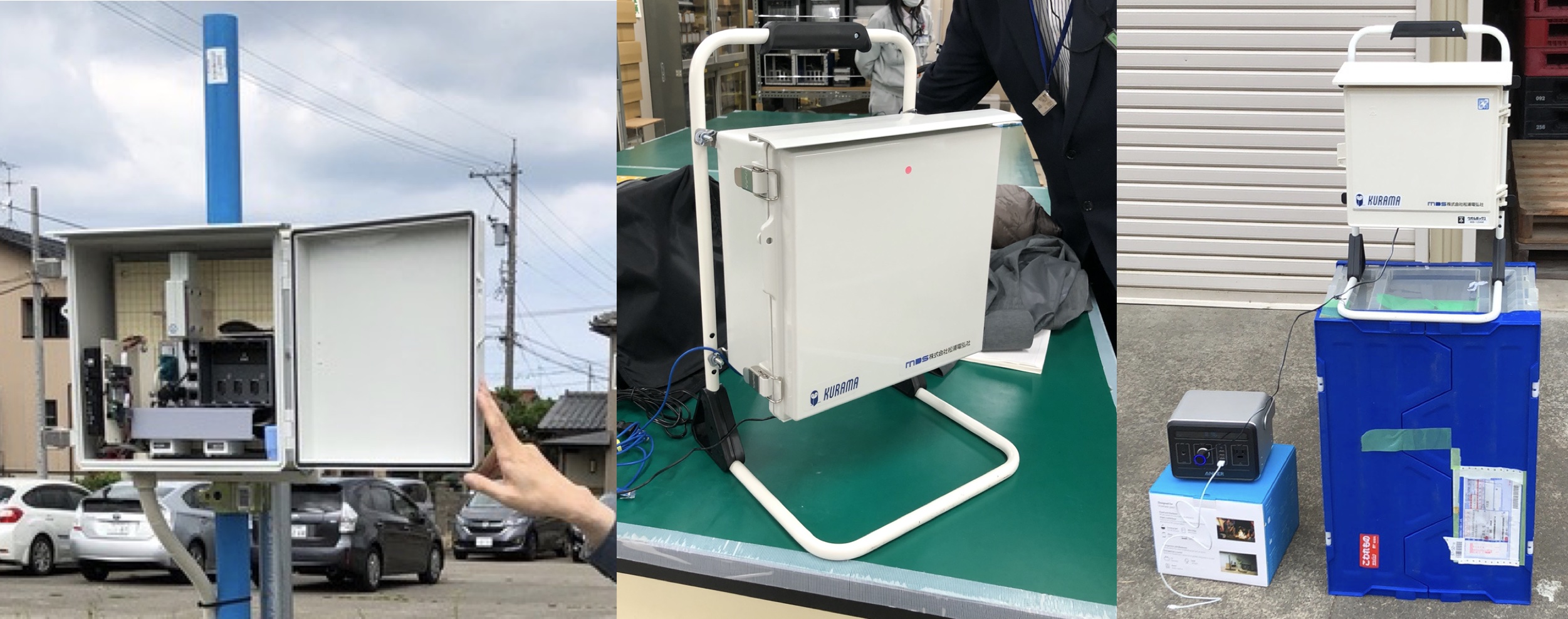Portable monitoring posts

In the emergency monitoring activities that have been considered in the past, it is assumed that portable monitoring posts will be deployed in a mobile manner. However, conventional portable monitoring posts typically weigh tens of kilograms when equipped with a high-precision NaI(Tl) detector. This is due to the need for a structure to protect the photomultiplier tube, which is a vacuum tube, as well as a high-voltage power supply necessary for the operation of the photomultiplier tube and sufficient batteries to run it. There were attempts to reduce size and weight by using semiconductor detectors, but there were problems with strict temperature control and ensuring accuracy at low dose rates.
In response to this situation, we have developed a compact and lightweight portable monitoring post based on KURAMA-II. The use of KURAMA-II inside and Hamamatsu Photonics C12137, a compact and lightweight CsI(Tl) detector that can be driven by USB bus power, eliminates the need for strict internal temperature control and a structure to protect the photomultiplier tube from shocks, resulting in a significant reduction in size and weight. By replacing the communication module with an LTE module for IoT, power consumption has also been significantly reduced, enabling operation for approximately one week with commercially available portable lithium batteries for outdoor use. The environmental performance of the system is also well secured, and it has operated normally even after several months of outdoor installation. While improving operational capability in this way, the measurement capacity is sufficient and meets the JIS standard for environmental γ-ray continuous monitors, JIS Z4325.
This research was supported by a grant from the Nuclear Regulation Authority of Japan (JPJ007057) for the Strategic Promotion of Radiation Safety Research. Development is being conducted jointly with Matsuura Denkosha.